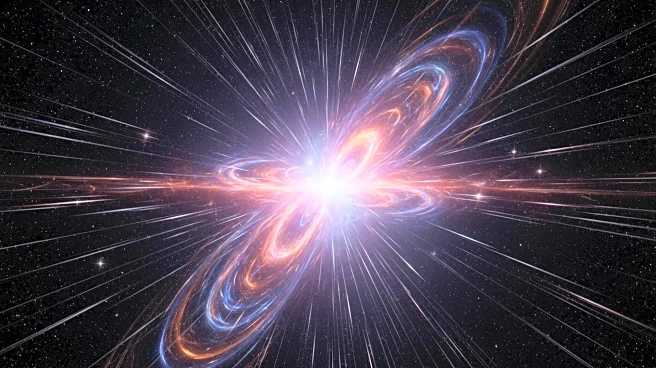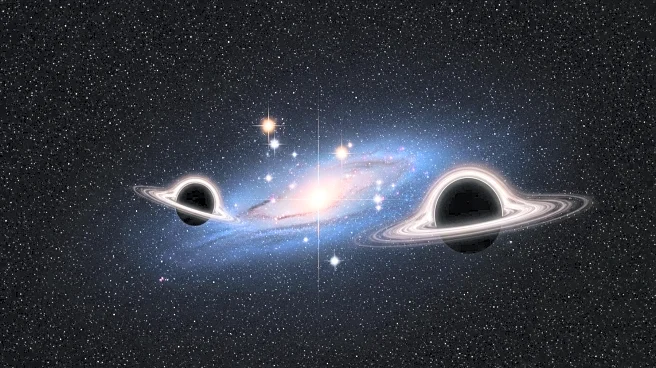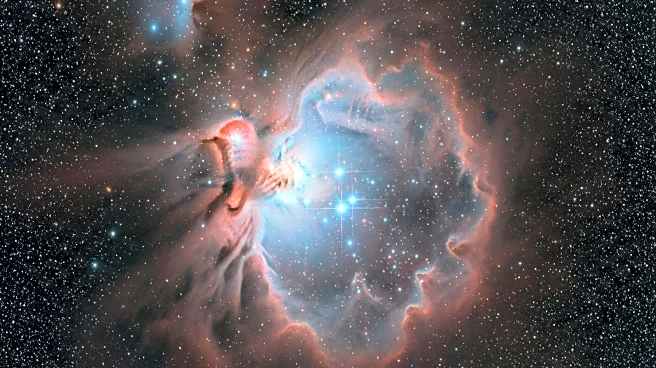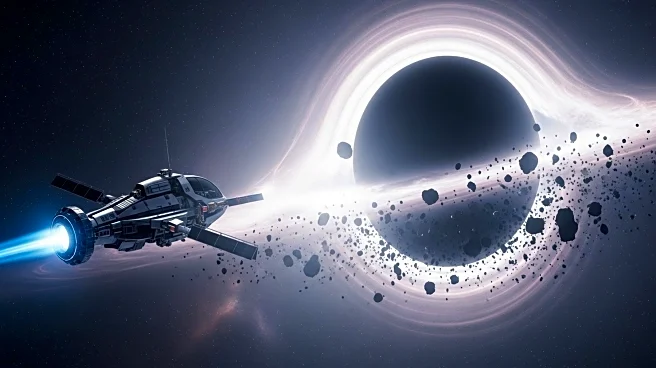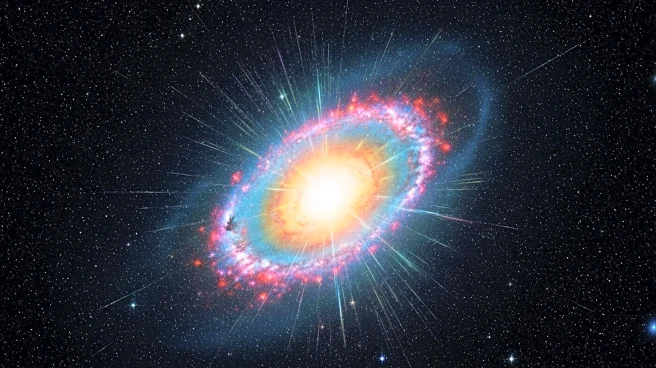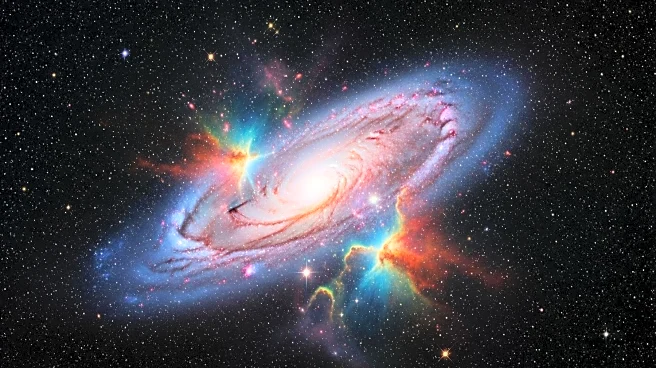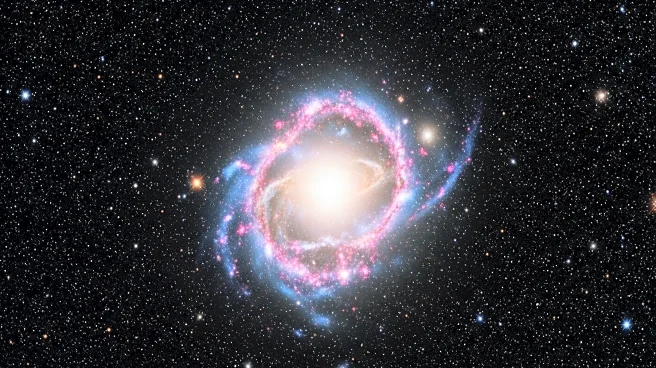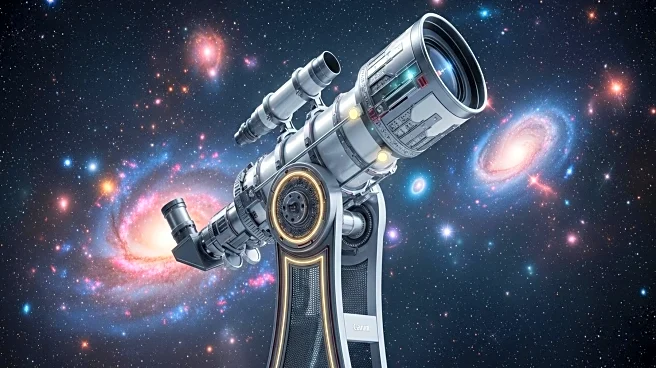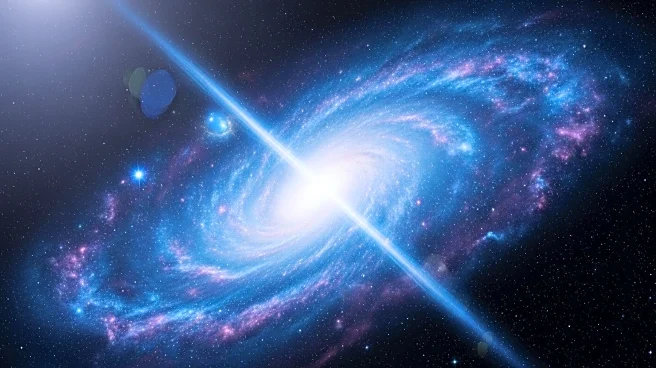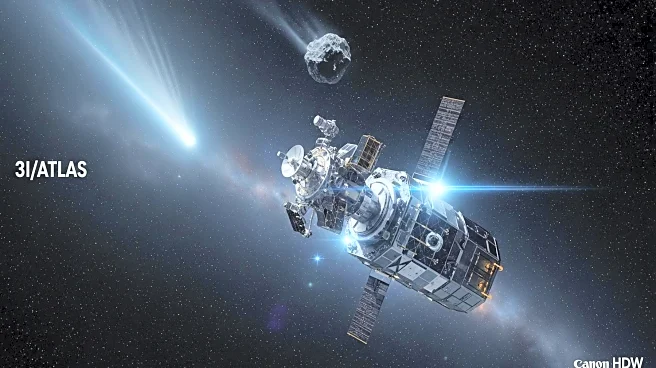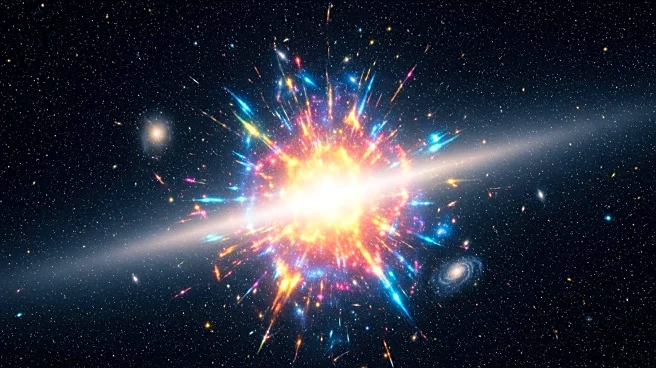What is the story about?
What's Happening?
Astronomers have observed a gamma-ray burst (GRB) designated GRB 250702B, which defies conventional understanding by lasting about a day and exhibiting repeated bursts. Typically, GRBs last milliseconds to minutes and occur once due to catastrophic events. This unusual GRB was detected by NASA's Fermi gamma-ray telescope and further studied using the Very Large Telescope and Hubble Space Telescope. The source, initially thought to be within the Milky Way, was found to be a distant galaxy with a peculiar shape, possibly offering clues to the GRB's origin.
Why It's Important?
The discovery of GRB 250702B challenges existing models of gamma-ray bursts, which are among the universe's most powerful explosions. Understanding this event could lead to new insights into the mechanisms behind GRBs, potentially involving tidal disruption events or intermediate mass black holes. This research pushes the boundaries of astrophysics and may redefine theories about cosmic explosions, influencing future studies on stellar deaths and black hole interactions.
What's Next?
Astronomers aim to determine the distance to the galaxy producing GRB 250702B to calculate its brightness and energy release. This will help narrow down the possible causes of the repeated bursts. Continued observations and analysis are expected to provide further understanding of this unique event and its implications for gamma-ray burst theories.
AI Generated Content
Do you find this article useful?
